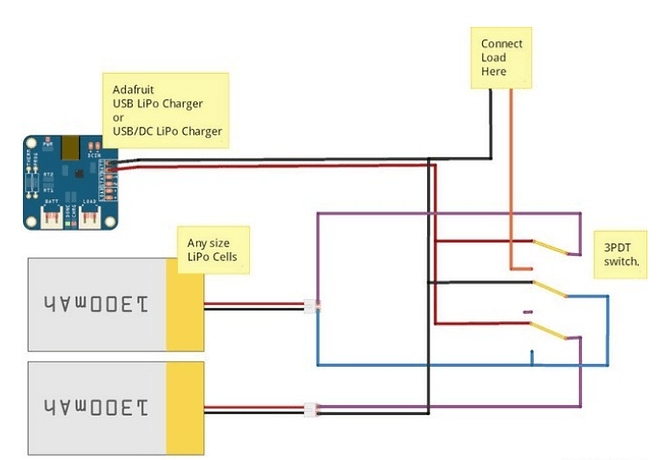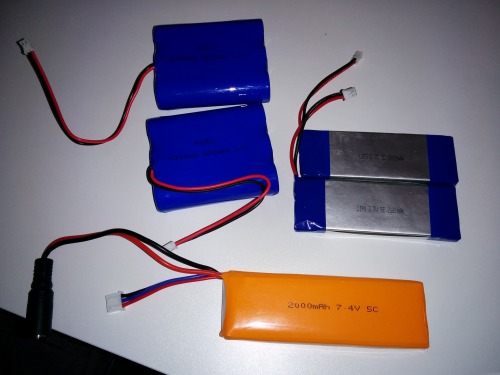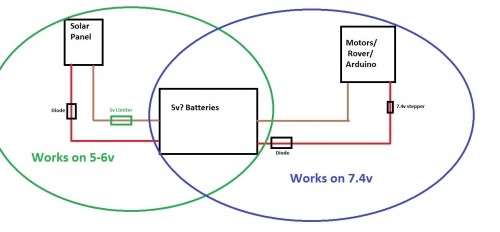Hi everyone,
I couldn't decide which forum topic to use for my post so I'll post right here in the "Absolute beginners" because I'm actually a programmer and I'm quite new to electronics so I don't want to put expectations too high. I may do or say something that looks pretty stupid for an experienced robot builder so forgive me and don't hesitate to mention it if it happen, I'm here to learn.
Now that I'm done with the presentation part, here is my multipart question.
I managed to build some kind of Solar Li-Po charger using a tutorial and stuff I bought at Adafruit.
The idea came from this tutorial when I wanted to power a Raspberry PI from Solar Panels:
https://blog.adafruit.com/2014/06/20/how-to-build-a-solar-powered-raspberry-pi-piday-raspberrypi-raspberry_pi/
But I decided that I would go with better product than what was suggested in the tutorial:
So I bought a "Huge 6V 5.6W Solar panel" instead of the Medium one because I thought that a smaller panel might not be enough to sustain the power needed by a Raspberry PI, and I bought a PowerBoost 1000 voltage regulator instead of a Powerboost 500 because I thought that 500ma was somewhat limited.
Here is my setup:
Free Energy! :o)
(Well not free because it's powered by my desk lamp right now but you get the point)
The solar panel (upper right) goes into the LiPo charger, which charge the Battery (left) plugged in the "batt" connector. The "Load" connector goes into the PowerBoost 1000 which upscale the Voltage from 3.7V to 5V to power my Arduino via a USB cable. And I also added connection to a breadboard that isn't upscaled so my Arduino could theorically check the battery voltage too using this connection.
Everything is working BUT I know (think?) that upscaling is less efficient than downscaling voltage and, if I want to power a Rover with 7.4V, I will need two LiPo connected together. (In serie)
That's where I'm kind of stuck. Serial charging seems to be a lot harder to do. (That or there are not a lot of samples on the net about this)
After some googling, I found that there actually IS a way to do it according to this adafruit document which involve a 3PDT switch but that's less than practical because it involve disconnecting the load each time you want to charge. (If it's solar powered all the time and my Arduino or Rasp-Pi need to monitor the charge without losing power, that's a big no...)
Now the only way I think that could work is to have two battery banks (4 batteries in total) using the solution above. While one set of batteries is solar-charging, the second set power the microcontroller and, when charging is complete, I should quickly switch power (using a big capacitor on the Load to avoid a quick blackout) between the first and second set. At time time, the first set will be connected to LOAD instead of charging while the second set will be charging instead of powering the circuit. This also has the advantage that the batteries will be in parallel while charging so they will be equalised frequently meaning less risk of dangerous LiPo fire.
That could work but, I mean, laptops do it all the time. They can charge and be used at the same time while using multiple batteries in serial. That look like trivial. How do they do it? Is my idea a good one or am I going in the wrong direction? Is there anything else I missed or maybe someone has another idea that could work?
Thanks for your feedback!




 The problem arise the moment I need more voltage and have more than one battery in serie. And I don’t want to charge them in serie at 7.4V because they could be in different charge state and that could be dangerous to overcharge one of them. I therefore need to charge them in parallel (which the 3PDT switch is for) so they can equalize. But the problem I have is that they can’t power the load in that “charging” state.
The problem arise the moment I need more voltage and have more than one battery in serie. And I don’t want to charge them in serie at 7.4V because they could be in different charge state and that could be dangerous to overcharge one of them. I therefore need to charge them in parallel (which the 3PDT switch is for) so they can equalize. But the problem I have is that they can’t power the load in that “charging” state. I would like to build some kind of battery module that can handle what I want to throw at it (like solar charging while in use), make sure it’s 100% safe, and simply replicate the module for all my future projects so I can focus on other things. (Things I’m not afraid to mess up)
I would like to build some kind of battery module that can handle what I want to throw at it (like solar charging while in use), make sure it’s 100% safe, and simply replicate the module for all my future projects so I can focus on other things. (Things I’m not afraid to mess up)

 )
)